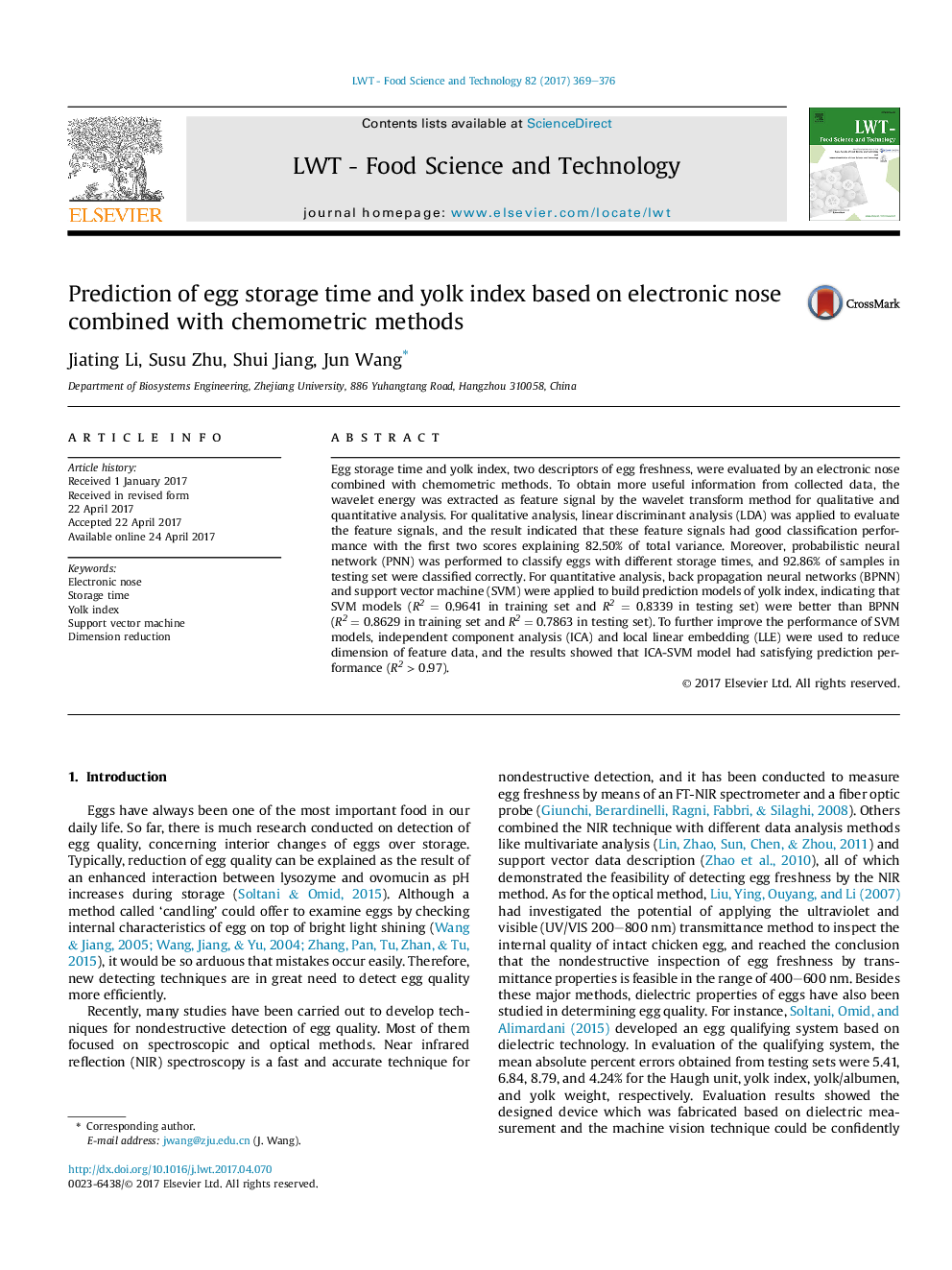| Article ID | Journal | Published Year | Pages | File Type |
|---|---|---|---|---|
| 5769184 | LWT - Food Science and Technology | 2017 | 8 Pages |
â¢Egg storage time and yolk index were evaluated using electronic nose system.â¢Wavelet energy was extracted as feature signal of sensors for data analysis.â¢LDA and PNN methods performed successful classification on egg storage time.â¢Yolk index was predicted by SVM model with dimension reduction methods.
Egg storage time and yolk index, two descriptors of egg freshness, were evaluated by an electronic nose combined with chemometric methods. To obtain more useful information from collected data, the wavelet energy was extracted as feature signal by the wavelet transform method for qualitative and quantitative analysis. For qualitative analysis, linear discriminant analysis (LDA) was applied to evaluate the feature signals, and the result indicated that these feature signals had good classification performance with the first two scores explaining 82.50% of total variance. Moreover, probabilistic neural network (PNN) was performed to classify eggs with different storage times, and 92.86% of samples in testing set were classified correctly. For quantitative analysis, back propagation neural networks (BPNN) and support vector machine (SVM) were applied to build prediction models of yolk index, indicating that SVM models (R2Â =Â 0.9641 in training set and R2Â =Â 0.8339 in testing set) were better than BPNN (R2Â =Â 0.8629 in training set and R2Â =Â 0.7863 in testing set). To further improve the performance of SVM models, independent component analysis (ICA) and local linear embedding (LLE) were used to reduce dimension of feature data, and the results showed that ICA-SVM model had satisfying prediction performance (R2Â >Â 0.97).
